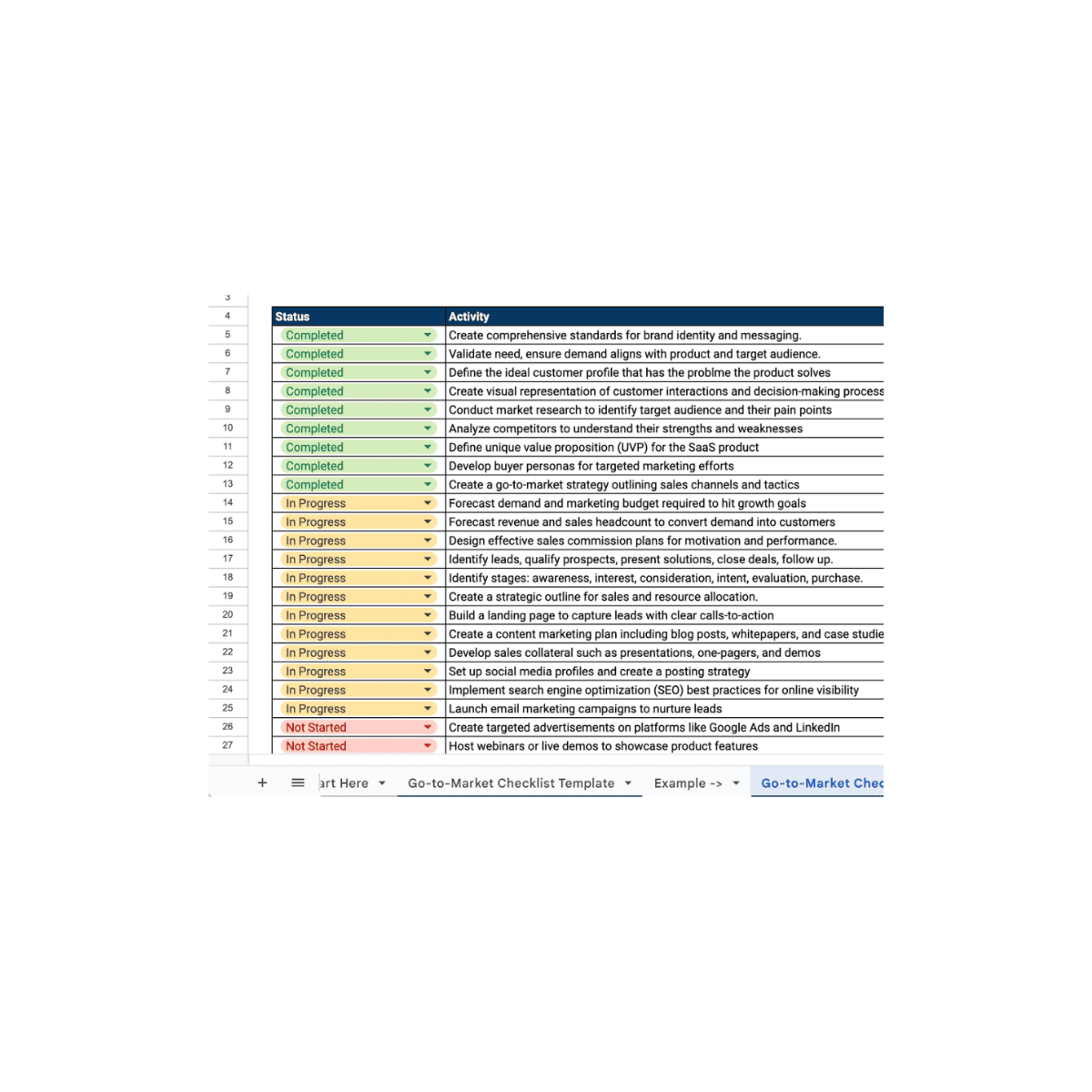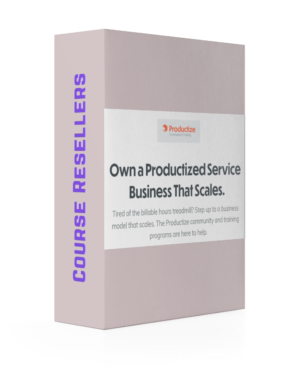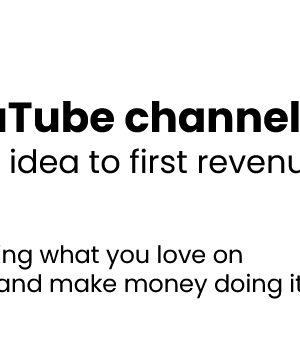Go-To-Market Checklist
Go-To-Market Checklist course is now available at an affordable price. You can check out directly using multiple payment gateway options. If you have any questions or need an alternative payment method, feel free to contact us.
The Perfect Go-To-Market Checklist: Present Your Product Like a Pro
Introducing a new product might seem like getting ready for a game with great stakes. You have spent many hours developing your product, investigating your market, and building your staff, but without a clear strategy all that effort might be useless. This is where a well-considered Go-To- Market Checklist helps. Consider it your playbook; every great team has one; now is the time you have yours! We will explore in great detail the key components of a Go-To- Market Checklist in this blog article, thereby enabling you to properly introduce your product, draw in your target market, and finally increase sales.
Recognizing the Go-To-Market Approach
Knowing what a Go-To- Market (GTM) plan is will help us later on when we go into the specifics of the checklist. Your road map for introducing a product or service into a market of competition is a GTM plan. It shows how you will get to your target market, present your message, set your service apart from rivals.
Inadequate market research and positioning account for 70% of product introductions failing, according a Product Marketing Alliance report. That is an astonishing count! So let’s use a thorough Go-To- Market Checklist to ensure you are not included in that number.
First: Know Your Target Audience
List your perfect customer profile (ICP).
Any effective Go-To- Market Checklist starts with precisely defining your target market. The individuals most likely to gain from your offering are Creating traffic and leads is cited by 63% of marketers as their main difficulty, claims HubSpot. Knowing your audience will enable you to go above this challenge.
Age, gender, economic level, schooling, and geography define demographics.
Psychographics cover interests, values, actions, and pain spots.
Knowing your ICP can help you to customize your marketing plans to really appeal to them.
Perform market research
Your Go-To- Market Checklist must include a great deal of market research. You have to understand consumer requirements, industry developments, and rivals. Statista claims that organizations which do extensive market research are seventy percent more likely to have successful new product introductions.
Interviews and Questionnaires: Directly get comments from possible clients.
Analysis of Competitors: Tell us where your rivals are lacking and what they are doing well.
Second stage: Specify Your Unique Value Proposition (UVP).
Your Unique Value Proposition (UVP) is the strong argument for why consumers ought to choose your product over the competitors. It should be succinct, unambiguous, and focused on the advantages your item offers.
developing the ideal UVP
State the advantages of your product. Your product fixes what issues?
different from rivals: How unique is your offering on the market?
A study by MarketingProfs indicates that businesses that clearly express their UVP are 65% more likely to close leads into customers.
Third step: create an all-encompassing marketing plan
Select your channels of marketing.
Your marketing strategy should include the outlets you will use to get to your target market. Common channels include:
Social Media: You may raise brand exposure via sites like Facebook, Instagram, and LinkedIn.
One excellent approach to maintain your audience updated and get prospects is email marketing.
Content marketing includes infographics, movies, and blogs that will inform your readers and project your industry’s expertise.
Effective implementation of your strategy depends on your knowing of your marketing budget. A CMO Council poll indicates that a company’s average marketing spend is around 6.5% of its total income. Still, your industry and company objectives will greatly affect this.
Fourth: Create Your Sales Plan
Select Your Model of Sales
Conversion of leads into clients depends critically on your sales approach. Among the many sales strategies you might select from:
Direct sales—that is, those made straight to customers via your website or sales force
Working with outside distributors and stores helps with channel sales.
Improve Your Sales Team’s Performance
Your product, UVP, and target audience should be second nature to your sales staff. Research by McKinsey & Company shows that a well-prepared sales staff may raise conversion rates by over 20%.
Step Five: Get ready for takeoff.
Create a Launched Timeline.
A launch schedule will guarantee that every component of your Go-To- Market Checklist is carried out without incident and assist keep your team on target. Think about:
Pre-launch activities help to build excitement with teasers and sneak peeks.
Execute your marketing strategy and include your audience in Launch Day activities.
Once launched, get comments and make required changes.
Create a System of Support
Make sure your customer service staff is ready to address questions or problems that could surface throughout the rollout. Bad customer service is the reason 82% of consumers have discontinued doing business with a firm, claims Zendesk.
Step 6: Track Performance and Iterate
Establish KPIs (key performance indicators).
It’s crucial to find out how well your product is selling after launch. Create KPIs complementing your company goals. Among common KPIs are:
Find out how much income your good brings in.
Calculate your customer acquisition cost (CAC) and find out how much you are paying to get a new client.
Find out from your customer satisfaction score (CSAT) how happy they are with your offering.
Analyze and adjust.
Compare the performance measurements to your expectations. Don’t hesitate to change if certain approaches did not provide the expected outcomes. A Harvard Business Review poll indicates that businesses which modify their plans in response to performance data receive an overall revenue boost of 12%.
Finally, starting Like a Pro with your Go-To- Market Checklist
Though launching a product is no minor task, you can confidently negotiate the complexity of the process with a well-organized Go-To- Market Checklist. Knowing your target audience, establishing your UVP, creating a marketing plan, designing a sales strategy, getting ready for launch, and evaluating performance can help you to ensure that your product succeeds.
All things considered, never forget that knowledge is power! You now understand the essential elements of a Go-To- Market Checklist and how they support a good introduction of a product. Still, this represents just the top of the iceberg. See [Go-To- Market Checklist] for extra worthwhile material if you’re seeking for more in-depth views or tools.
Are you therefore ready to use your acquired knowledge? Your product release is waiting—let’s make it memorable!
Delivery Policy
When will I receive my course?
You will receive a link to download/view your course immediately or within 1 to 24 hrs. It may takes few minutes, also few hours but never more than 24 hrs. Due to different time zone reasons.
How is my course delivered?
We share courses through Google Drive, so once your order is complete, you’ll receive an email with a google drive folder access link to view the course in your email.
To avoid any delay in delivery, please provide a Google mail and enter your email address correctly in the Checkout Page.
In case you submit a wrong email address, please contact us to resend the course to the correct email.
Where can I find my course?
Once your order is complete, a link to download/view the course will be sent to your email.





